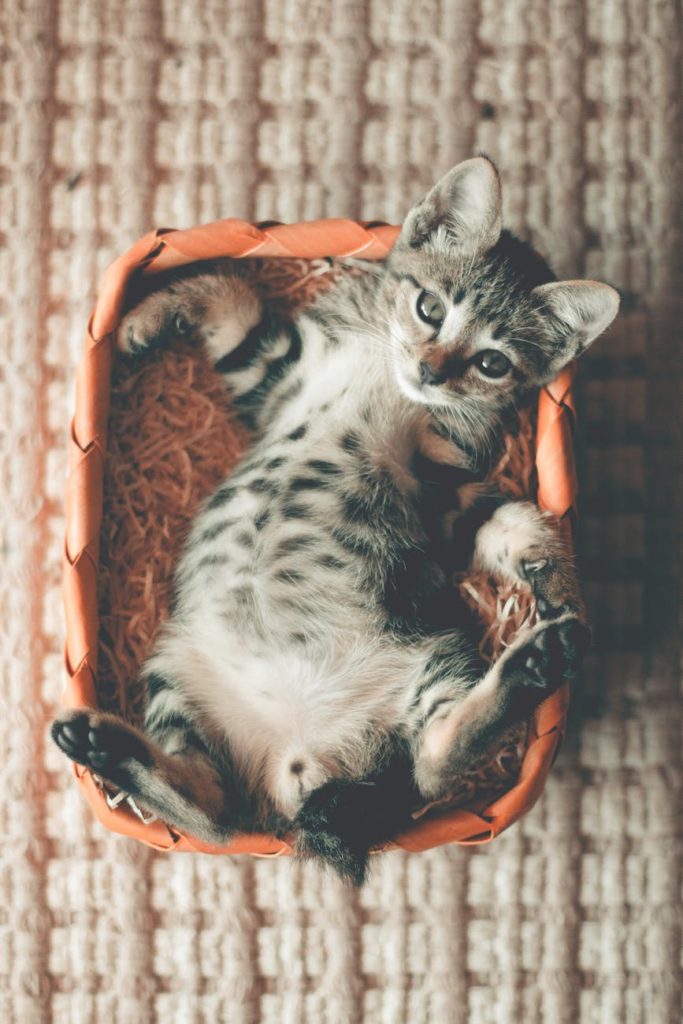Litter Box Training with Kittens
Training a kitten to use the litter box can be a challenging task, but it is essential for maintaining a clean and healthy living environment. In this article, we will provide you with useful tips on how to train your kitten to use the litter box effectively.

Table of Contents
Purr-fectly Prepared: 10 Effortless Tips for Joyful Litter Box Training with Kittens
Welcome to the delightful world of kittens! There’s nothing quite as charming as watching a tiny furball bounce around your home. However, one of the first challenges you’ll face as a new kitten parent is litter box training. Litter Box Training with Kittens. Luckily, with the right techniques and a little patience, this process can be both effortless and joyful. In this blog post, we will explore ten essential tips to help you navigate the journey of litter box training with kittens.
1. The Right Litter Box: A Cozy Sanctuary
When it comes to litter box training with kittens, the first step involves acquiring the right equipment. Litter Box Training with Kittens. Choose a litter box that suits your kitten’s size; opt for a box that is low enough for them to enter easily. Many kittens feel intimidated by tall boxes, so this consideration will encourage them to explore their new bathroom.
Moreover, position the litter box in a quiet, accessible area. Avoid high-traffic regions or spots near loud appliances. Litter Box Training with Kittens. A serene environment will help your kitten feel secure while doing their business. Remember, the aim is to create a sanctuary where your kitten feels comfortable and safe, allowing them to embrace their new bathroom habits.
2. Choosing the Right Litter: Scent and Texture Matter
Equally important as the litter box is the type of litter you use. Kittens often prefer unscented, clumping litter since it mimics their natural instincts. Litter Box Training with Kittens. Consequently, steer clear of heavily perfumed varieties that might deter your kitten from using the box. Stick to natural, safe materials that won’t irritate their sensitive noses or paws.
Transitioning to the right texture is also essential. Soft litter is generally more appealing to delicate paws, while coarse varieties can feel uncomfortable. Litter Box Training with Kittens. Experimenting with a couple of different types is key. Litter Box Training with Kittens. Your goal is to find the perfect litter that strikes a balance between sectioned clumping and sensory comfort for your kitten.
3. Multiple Boxes for Multiple Kittens
If you have more than one kitten, it’s best practice to have multiple litter boxes. The golden rule is to provide one litter box for each kitten, plus one extra. This prevents territorial disputes and encourages healthy potty habits. Litter Box Training with Kittens. When kittens feel they have options, they are more likely to use the litter box consistently.
Moreover, strategically placing these boxes throughout your home ensures that your kittens always have access. Litter Box Training with Kittens. Consider where your kittens spend most of their time to determine optimal locations. This proactive approach facilitates successful litter box training with kittens, ensuring they can find a box when nature calls.
4. Establish a Routine: Creating Consistency
Kittens thrive on routine. To simplify litter box training, establish a consistent schedule for feeding and litter box access. Litter Box Training with Kittens. Kittens typically need to relieve themselves shortly after meals, so monitoring their habits and corresponding feeding schedules can enhance your training efforts.
In addition, observe your kitten’s natural behaviors. If you spot them sniffing around or scratching the floor, immediately lead them to the litter box. Litter Box Training with Kittens. This proactive approach reinforces the habit of using the box for their needs. With consistent feeding and personalized attention, you will create a reliable potty routine in no time.
5. Positive Reinforcement: The Power of Praise
Positive reinforcement plays a crucial role in litter box training with kittens. When your little furry friend uses the litter box correctly, shower them with praise immediately. Verbal encouragement combined with gentle petting or even a small treat can significantly boost their confidence and help them associate the litter box with positive experiences.
Conversely, avoid punishing or scolding your kitten for accidents outside the box. Litter Box Training with Kittens. Reacting negatively can create anxiety and confusion, making training more challenging. Instead, focus on celebrating their successes to instill a joyful and stress-free learning environment.
6. Keeping it Clean: Hygiene is Key
Kittens are instinctively clean animals and may reject a dirty litter box. To facilitate litter box training, clean the box regularly, removing clumps and debris at least once a day. Doing so limits odors and provides a cleaner environment for your kitten, which, in turn, encourages frequent use.
Furthermore, consider washing the box itself weekly with mild soap and water to maintain hygiene. Litter Box Training with Kittens. Remember to avoid using strong chemicals that may linger and deter your kitten from using the box. A clean, welcoming space establishes a routine that your kitten can trust and feel relaxed in.
7. Observing Behavior: A Guide to Read Kittens
Understanding your kitten’s behavior is crucial for successful litter box training. Watch for signs of discomfort or confusion as they approach the litter box. Litter Box Training with Kittens. For instance, if they hesitate or shy away, it may indicate an issue with the box itself, such as size, location, or cleanliness.
Additionally, be patient. Some kittens may take longer to adjust to litter training than others. Observing their habits will help you identify patterns, leading to a tailored approach for each kitten’s needs. Litter Box Training with Kittens. With time and careful observation, you will foster a successful relationship built on understanding and patience.
8. Gradual Transition: Making Changes Smoothly
If you decide to change the type of litter you use or move the litter box, do so gradually. Kittens can be sensitive to sudden changes in their environment. Litter Box Training with Kittens. To promote a smooth transition, consider mixing the old litter with the new one initially. This method allows your kitten to acclimate to the change without feeling overly stressed.
If relocating the litter box, make the move step-by-step. Start by moving it a few feet closer to the desired location. Once your kitten seems comfortable with that stage, gradually shift it to the final spot. Litter Box Training with Kittens. This gradual exposure will help maintain their comfort and build a positive association with the new setup.
9. Managing Accidents: Stay Calm
Accidents are a normal part of litter box training with kittens. When these occur, it’s essential to remain calm and handle the situation with understanding. Avoid harsh reprimands; instead, clean the area thoroughly to remove odors, which can attract kittens back to the same spot.
Consider using an enzymatic cleaner specifically made for pet accidents. These products break down odor-causing substances, eliminating the smell that might tempt your kitten to relive their mistakes. Litter Box Training with Kittens. Remember, patience and consistency are vital. Over time, kittens will learn where they should and shouldn’t go.
10. Consult the Vet: Addressing Concerns
Lastly, if you encounter persistent issues with litter box training, consulting your veterinarian can provide valuable insight. Sometimes, accidents can stem from medical issues such as urinary tract infections or other health concerns. Litter Box Training with Kittens. A quick examination can rule out any underlying problems that may hinder progress.
In addition, your vet can offer personalized advice based on your kitten’s behavior and health history. They may recommend specific litter options or techniques tailored to your kitten’s unique needs. With professional guidance, you can tackle any challenges you face during the litter box training process effectively.
A Journey of Joyful Learning
Embarking on the adventure of litter box training with kittens can be both rewarding and fun. It’s essential to create a comfortable environment, utilize positive reinforcement, maintain cleanliness, and be patient as your kitten acclimates to their new routine. Litter Box Training with Kittens. Each small victory is a step towards fostering a joyful relationship between you and your furry friend.
Remember, every kitten is unique, and some may take longer to grasp the concept than others. However, with your dedication and love, you will create a safe space for your kitten to thrive. So embrace the journey, and soon you’ll bask in the satisfaction of watching your kitty master their litter box skills!

Choose the Right Litter Box
The first step in litter box training your kitten is to choose the right litter box. The litter box should be large enough for your kitten to move around in comfortably. It should also be low enough for your kitten to climb in and out of easily. A covered litter box may make your kitten feel confined and trapped, so it’s best to start with an uncovered litter box.
Choose the Right Litter
Choosing the right litter is just as important as selecting the appropriate litter box for your feline friend. The variety of litter options available can be overwhelming, including types like clay, crystal, and natural litters.
Each type has its own set of pros and cons, but it’s essential to consider the specific preferences of your kitten. Kittens generally tend to favor fine-grained, unscented litter because it resembles the texture of sand, allowing them to dig and cover their waste more comfortably.
When selecting litter for your young cat, it’s crucial to prioritize safety. Litter Box Training with Kittens. Always opt for litters that are specifically labeled as safe for kittens, steering clear of any products that contain harsh chemicals or synthetic perfumes which can be irritating to their sensitive skin and respiratory systems. Additionally, some litters are clumping, which may help with cleanliness and odor control, while others are non-clumping but offer better absorbency.
It’s advisable to experiment with a few different types to determine which one your kitten prefers, as this can help make the litter box a more inviting place. Ultimately, the right litter can contribute to your kitten’s comfort and happiness, ensuring they have a pleasant experience during their potty training journey.
Show Your Kitten the Litter Box
Once you have chosen the perfect litter box and litter for your new furry friend, it’s time to introduce your kitten to this important part of their daily routine. Place the litter box in a quiet and accessible location to make it easy for your kitten to find.
Initially, you should help your kitten understand its purpose. After meals and when your kitten wakes up from a nap, gently place your kitten in the litter box. This helps create a positive association with the box from the very beginning.
To further encourage your kitten to use the litter box, gently scratch the litter with your kitten’s paw. This mimics the natural digging behavior that cats often display and can pique their curiosity. It’s important to be patient as your kitten learns where to go. If your kitten does have accidents outside of the box, refrain from scolding; instead, clean up promptly to remove any lingering odors that might attract your kitten back to that spot.
Remember, consistency and positive reinforcement are key. With time, your kitten will become accustomed to using the litter box, maintaining cleanliness in your home and ensuring a happy, healthy environment for your pet.
Reinforce Good Behavior
When your kitten uses the litter box correctly, be sure to praise your kitten enthusiastically and give your kitten a tasty treat. This positive reinforcement is crucial as it helps your kitten associate the act of using the litter box with enjoyable experiences. Kittens are very perceptive and respond well to encouragement, which fosters a sense of security and trust between you and your furry friend.
If your kitten has an accident outside of the litter box, it’s important to remember that punishment is not the solution. Instead of scolding your kitten, calmly clean up the mess without fuss, as reacting negatively can create fear or confusion.
Kittens are still learning, and accidents are a normal part of their development. Take this opportunity to reassess their litter box setup: ensure it is easily accessible, clean, and in a quiet area where your kitten feels comfortable.
Regularly refreshing the litter and choosing the right type can also make a significant difference. If accidents persist, consider consulting a veterinarian to rule out any underlying health issues. patience and understanding are key to effectively guiding your kitten toward consistent litter box use. With time and encouragement, your kitten will develop good habits.
Keep the Litter Box Clean
Kittens are inherently clean animals and have a natural inclination to use a tidy litter box. To ensure that your kitten remains happy and healthy, it’s essential to scoop the litter box daily. This simple task not only keeps the space odor-free but also prevents any build-up of waste that might deter your kitten from using it.
Additionally, changing the litter completely at least once a week is crucial for maintaining optimal hygiene. This helps reduce smells and keeps the environment fresh for your furry friend.
A clean litter box will significantly contribute to your kitten’s overall well-being and encourage good litter box habits from an early age. If the box is too dirty or smelly, your kitten may begin to associate it with unpleasant experiences, leading to avoidance and potential inappropriate elimination elsewhere in your home.
Remember to choose a litter that suits your kitten’s preferences, as this can also affect their willingness to use the box. As a part of your daily routine, take a moment to check the litter box and ensure it’s up to standard. By prioritizing cleanliness, you’re fostering a positive environment for your kitten, ultimately enhancing their comfort and happiness.
Live Pee Free! Odor Eliminator 100% Eliminates Pet Odor on Contact. 20% Off. No Enzymes, No Fragrance, No Detergent, No Bleach – Safe for Kids and Pets.Be Patient
Training a kitten to use the litter box may take some time and patience. Every kitten is unique and will have its own pace when it comes to adapting to new routines. It is essential to be patient and consistent with your training, as rushing the process can lead to confusion or setbacks.
Start by creating a comforting environment for your kitten. Choose an appropriate litter box that is the right size for them—too large or too small may discourage use. Fill the box with unscented, fine-grain litter, as kittens often prefer textures akin to what they would encounter in nature. Place the litter box in a quiet, accessible location away from their food and water to ensure they feel secure when using it.

If your kitten has accidents outside the litter box, do not scold them. Instead, clean the area thoroughly to eliminate any lingering odors that might entice them to return to that spot. After meals or playtime, gently place your kitten in the litter box to encourage them to use it. Over time, they will learn to associate the box with relief.
With time and patience, your kitten will develop good litter box habits and maintain them throughout their life. Celebrate small victories along the way, rewarding your kitten with praise or treats when they use the box correctly. This positive reinforcement helps reinforce their behavior, making them more likely to continue using the litter box consistently. Remember, establishing good habits takes time, but your efforts will pay off in the long run.
In conclusion, training a kitten to use the litter box requires the right litter box, the right litter, patience, and consistency. Remember to reinforce good behavior, keep the litter box clean, and be patient. With these tips, you can successfully train your kitten to use the litter box effectively and maintain a clean and healthy living environment.



